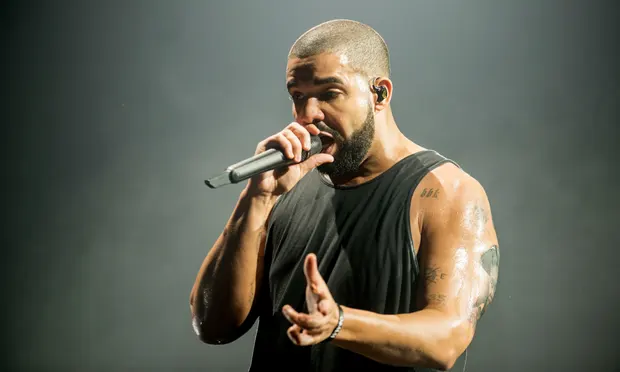As dust from the gold rush settles, big record companies and elite artists emerge firmly on top
Drake amassed more than 5bn streams last year – more than any other artist worldwide.
Last modified on Sun 3 Oct 2021 04.24 EDT
With the streaming revolution breathing new life into a once-moribund music industry collapsing under plummeting CD sales and rampant piracy, the world’s biggest record companies – Universal Music, Sony Music and Warner Music – have got their financial mojo back.
Mashene Music Group – Info | Corporate Royalty Sharing | Social @ LinkTree
After facing financial ruin a decade ago, the trio, which control the vast majority of the world’s biggest hits with a roster of talent spanning Taylor Swift, Ed Sheeran and Coldplay to the Beatles, Adele and the Korean megaband BTS, are now valued at a combined $100bn (£73.8bn) as investors bank on the titans being the biggest winners of the streaming boom.
“Fundamentally, music is a superstar business,” says Mark Mulligan, an analyst and the managing director at Midia Research. “The streaming economy is working really effectively in many ways.
Music is now seen as stable, so big institutional investors are flooding the space as they see streaming as a safe and predictable asset. But they want to invest in the biggest companies and the major labels have that market share, they have more artists – the biggest – they have more streams, more everything.”
It is the sustained streaming gold rush that sent shares in Universal Music – the world’s biggest music company which was floated by its French parent, Vivendi, earlier this month – soaring, giving the business a €45bn valuation. Bought for $3.3bn in 2011 by Sir Leonard Blavatnik, Warner Music, the world’s third biggest music company, has rocketed to a $22bn market capitalisation since being floated last year.
The big music companies have been able to use their muscle to strike increasingly advantageous deals on royalties from streaming with leading platforms such as Spotify. The basis of that negotiating power was highlighted in a report from the Intellectual Property Office published last week, which showed that the top 1% of artists account for 80% of all streams, and that 10% account for 98% of all listening by fans.
And of the most popular tracks, big music companies own the rights to three times as many among the top 10% as those owned by independent labels. In any given week, nine of the top 10 selling songs globally – the streaming cash cows – are owned by one of the three big music companies.
The success of the big music companies has come in for criticism with an inquiry by a select committee of MPs into the economics of streaming published this summer calling for a “complete reset” of royalty payments to musicians, after concluding that only big acts and labels make money from the current system.

‘It cannot help but feel exploitative’: Eliza Shaddad. Photograph: David Wolff-Patrick/Redferns
“Streaming has become such an important part of our record releases, and can obviously provide brilliant opportunities and open doors for songs – but without fair remuneration for songwriters and performers it cannot help but feel exploitative,” says the singer-songwriter Eliza Shaddad. “Streaming is clearly the future for music and as such needs to be doing more to help artists forge sustainable careers.”
Drake, one of the 1% superstars who has deals with Universal and Warner and has a net worth of hundreds of millions of dollars, amassed more than 5bn streams last year, the most of any artist worldwide.
However, the number of UK artists managing just 1m streams domestically in at least one month last year was about 720, according to the IPO. After various cuts of royalties, that can leave the musician with as little as £1,500 a month, according to Midia Research.
The IPO admits that at least 12m streams annually in the UK, plus more in overseas markets, as well as “other sources of income”, are all required to make a “sustainable living out of music”. “Streaming only adds up when you have billions, not millions, of streams,” says Mulligan.
The pandemic shut down the live music industry, which most artists rely on for the bulk of their income, resulting in musicians putting the details of their contracts regarding streaming income under scrutiny.

Tom Gray performing with the band Gomez. Photograph: Leon Morris/Redferns via Getty Images
“[Most] artists can’t even buy a cup of tea from streaming,” says Tom Gray of the band Gomez, who is the founder of the campaigning group Broken Record. “Most, except for the most successful or the flavour of the month, have a limited or fixed audience once they are established. 99% of artists will not see the benefit of streaming and that is not how the economics are supposed to work.”
Streaming critics argue that despite growing numbers of subscribers to music services such as Spotify, Amazon and Apple, which have surged from 86m in 2015 to an estimated 550m by the end of this year, the average price paid a month continues to drop as so many are on cheap deals.
At the same time, the digital era has made the release of music simple: there were 5 million new self-releasing musicians last year, and a staggering 65,000 new songs are uploaded to streaming services each day.
All of which means the royalty revenue pie is not growing fast enough to spread sizeable payments across more and more songs and artists. The IPO report found that just under half of musicians in the UK (47%) earn less than £10,000, while 62% earn less than £20,000.https://interactive.guim.co.uk/charts/embed/oct/2021-10-01T10:14:52/embed.html
“It really only serves the aggregators – the big music groups and the streamers who keep growing,” says Gray. “Let’s face it, the odds are against you.”
However, the IPO research also offers a more nuanced picture of the winners and losers in the streaming era. The report found that overall, musicians make the same in real terms from recording rights revenues now as they did in 2008 – the pre-internet era – and royalty income taken home by artists across physical and digital sales has grown by 42% since then, far more than the 8% rise in the growth of record company revenues.
“The share of royalties that artists and songwriters command in the streaming economy is considerably larger than the share they enjoyed from CDs and downloads,” says Geoff Taylor, the chief executive of the industry body, the BPI. “The idea that artists aren’t receiving a fairer share from streaming, we never felt that reflected the factual situation.”https://www.theguardian.com/email/form/plaintone/business-todaySign up to the daily Business Today email or follow Guardian Business on Twitter at @BusinessDesk
The report found that 68% of musicians surveyed by the IPO said overall their income had either stayed the same or increased since 2015, and that life at a big label paid better at an average of £51,800 a year, notwithstanding the fact that artists spend years paying off advances made by labels to pay for producing, marketing and distributing their music.
Taylor says the democratisation of the digital era has created more success stories. About 2,000 artists hit 10m UK streams last year, which is considered to be the equivalent of selling 10,000 albums, double the number who sold that many physical copies in 2007.
“More artists are succeeding in the streaming economy than the CD economy,” he says. “But of course there are also more that are not succeeding, because there are simply so many more in the market now. I think streaming has been good for the smaller and bigger players. If we can bring in more money from streaming, that will benefit everyone and grow the value of the streaming economy.”
This article was amended on 2 October 2021. The IPO report found that 47% of UK musicians earn less than £10,000, and 62% earn less than £20,000; not that 64% earn £30,000 or less as an earlier version said. That last figure relates only to those whoseincome is entirely based on music
Source: London Guardian







